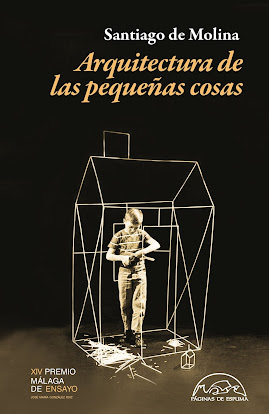De hecho, de esos inventos del siglo pasado, y ahora que el plástico está tratando de hacerse desaparecer, solo nos queda Mies.
Mies fue lo único que entró en la casa con la capacidad de cambiar su forma. Junto con el aparador y la butaca mecedora heredados de nuestros antepasados, una sombra del arquitecto alemán vaga por las casas modernas, encarnado en los muebles de IKEA (únicos y legítimos herederos de su arquitectura y de su espíritu, por mucho que estén privados del concepto de lujo). Allí, y en la pobreza sistemática de la decoración que hace que las casas permanezcan medio vacías y con eco hasta bien entrada la vida.
Dicho esto, su herencia, el Minimalismo relajado en el que habita medio mundo, se ha convertido en un oxímoron invisible. En la casa estandar, tanto de oriente como de occidente, lo miesiano es solamente una filosofía parcial y, por tanto, contradictoria. El "menos es más" es un programa demasiado exigente como para hacerse extensivo a la vida diaria. Es decir, en nuestras casas gozamos de Mies y su esencialismo, pero parcialmente, por tramos inconexos. A plazos. Poseemos una mesa exquisitamente depurada en su diseño, cuyas aristas son de una pulcritud increíble si la comparamos con las del pasado, o una lámpara que es una delicia de simplicidad industrial, pero, a su lado, encontramos una damasquinada alfombra turca o un armario ropero de pino teñido de caoba.
Es decir, todo hogar contemporáneo acoge la sombra de un Mies ectoplasmático, con la cabeza sujeta bajo el brazo, como esos fantasmas decapitados de las películas de serie B, que vaga refunfuñando por nuestras habitaciones y pasillos, un poco a la gresca con el resto de los fantasmas, que no entienden ese afán suyo por colocar cosas en lugar de esconderlas, como hacen ellos.
In fact, from these inventions of the last century, and now that plastic is striving to vanish, only Mies remains.
Mies was the sole element that entered homes with the power to reshape them. Alongside inherited sideboards and rocking chairs from our ancestors, a shadow of the German architect wanders through modern houses, embodied in IKEA furniture (the unique and legitimate heirs of his architecture and spirit, even though they lack the concept of luxury). There, and in the systematic simplicity of decor that leaves homes echoing and half-empty well into our lives.
That said, his heritage, the relaxed Minimalism that half the world, embraces has become an invisible oxymoron. In the average household, be it in the East or West, Miesian ideals represent only a partial and, consequently, conflicting philosophy. "Less is more" is too demanding a concept to extend to daily life. In other words, in our homes, we experience Mies and his essentialism, but only partially and in disconnected segments. In installments. We possess a table exquisitely refined in design, with edges of remarkable cleanliness when compared to the past, or a lamp that delights in industrial simplicity. Yet, next to them, we find a damascened Turkish carpet or a mahogany-stained pine wardrobe.
In essence, every contemporary dwelling harbors the presence of a ghostly Mies, with his head held under his arm, much like those decapitated phantoms from B-movie films. He roams through our rooms and hallways, grumbling, at odds with the other ghosts, who don't understand his zeal for arranging things instead of concealing them, as they do.





,%20India,%20photo%20by%20H.G.%20Ponting,%20y%20Fala%20Atelier,%20Casa%20Suspendida,%20Oporto,%20imagen%20Fala%20Atelier.jpg)








.jpg)









































































































